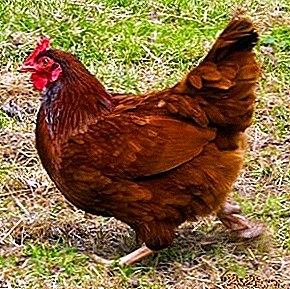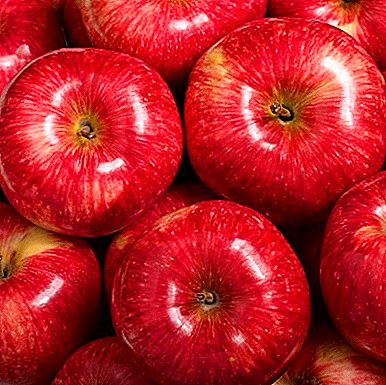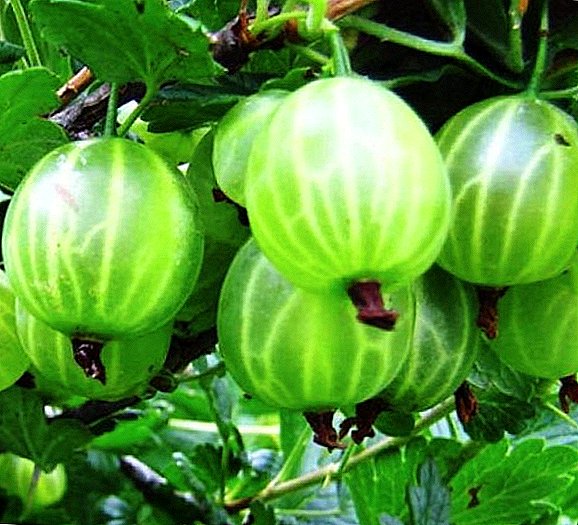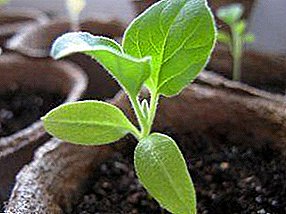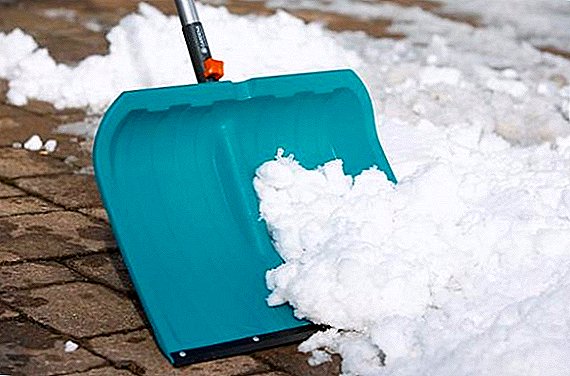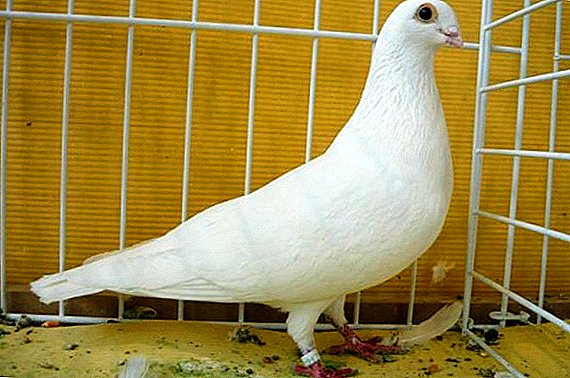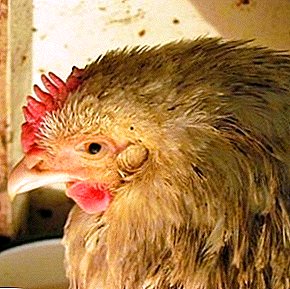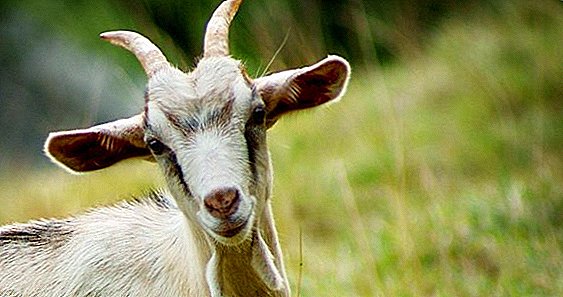 Keeping goats in a farmstead is very profitable, albeit troublesome. Animals need careful care, since poor housing conditions provoke the appearance of cattle disease, due to which one can significantly lose in profits and even lose livestock. One of these diseases is udder mastitis. About what this disease is, how to identify it, cure it and prevent it in the future - in our material.
Keeping goats in a farmstead is very profitable, albeit troublesome. Animals need careful care, since poor housing conditions provoke the appearance of cattle disease, due to which one can significantly lose in profits and even lose livestock. One of these diseases is udder mastitis. About what this disease is, how to identify it, cure it and prevent it in the future - in our material.
Etiology of the disease
Mastitis is an inflammation of the breast caused by a viral infection. Malicious organisms enter the udder through the nipple or external damage to the breast. They multiply rapidly in the tissues, causing an inflammatory process. Often the pathogens are microorganisms present in the flora of the udder. Due to weakened immunity, the number of harmful microorganisms increases. 
The existing causes of mastitis can be divided into 3 groups:
- biological;
- mechanical;
- thermal.
- from the milkmaidin contact with sick animals;
- from calf - while sucking the udder;
- blood flow from other organswhere the inflammatory process takes place;
- from sick individuals - in case of non-compliance with the conditions of detention, through wounds on the udder.
We advise you to read about the diseases of goats and the features of their treatment.
Varieties of mastitis
Goat mastitis occurs in four different forms. Consider each of them more closely.
Subclinical
This is a hidden form of the disease, which has no pronounced clinical picture and is often asymptomatic. 
The following moments should make the farmer alert:
- drop in milk yield;
- changing the taste of dairy products;
- rapid souring of milk.
Did you know? Subclinical form of mastitis is the most common. She meets in 70-80% of cases.
Chronic
Mastitis most often passes from this form, which is neglected, not healed acute. With such a development of the disease, there can be no talk of complete recovery, therefore it is necessary to overcome the disease as much as possible before the onset of pregnancy, so that the feeding process can proceed without complications. 
This form can also proceed without pronounced signs.
Concerns should cause:
- udder seal;
- lumps in milk;
- souring milk after boiling;
- pink staining of milk.
Acute
In acute form, the goat’s condition quickly and suddenly deteriorates:
- sudden drop in milk yield to the complete absence of milk;
- increase in breast temperature, change its color;
- the presence in the milk of inclusions in the form of mucus, pus, flakes, blood;
- udder dense, skin taut;
- squeeze out milk is difficult due to blockage of the nipple canal.
Imaginary
It often happens that the udder is edematous, the nipples are rough, the milk is given poorly, but there are no extraneous inclusions in it, and the rapid test is false-positive. This situation indicates the presence of false or imaginary mastitis. Often it occurs after childbirth. The reason for its appearance is not viral, but is associated with lymphatic stagnation.
Important! For the treatment of imaginary mastitis can not apply massage and ointment, because they, on the contrary, only exacerbate the situation. Will help the usual decoction of dill seed.
Main features
Common symptoms of the disease are:
- One part of the udder or both are compacted, and the goat reacts calmly to their massage.
- When udder feels, its heterogeneity is felt.
- The presence of clots, clogging with the beginning of the milking nipple canal.
- After filtering the milk on the gauze visible lumps, mucus, flakes.
- Milk, even after boiling, is stored for a day.
- Bitter taste of milk, unpleasant or unfamiliar smell.
- The body temperature of the animal is increased.
Causative agents and causes
The causative agents of the disease are such microorganisms:
- Staphylococcus aureus;
- streptococcus bacteria (Str. agalactiae and Str. dysgalactiae);
- Bacillus cereus;
- Corynebacterium bovis;
- Pseudomonas aeruginosa;
- Proteus vulgaris;
- Klebsiella oxytoca;
- E. coli.
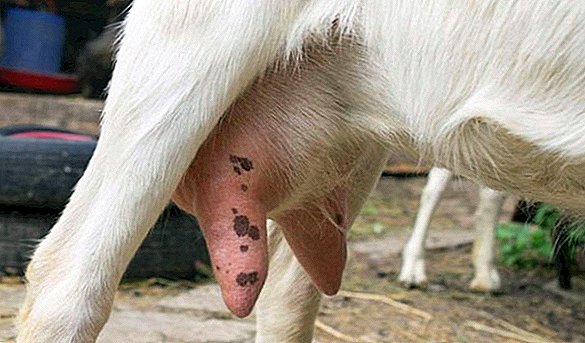
Unsatisfactory conditions of detention
The unsanitary conditions of the animal contribute to the development of pathogenic microorganisms, which, through the dirty litter and the beds, enter the udder, where they begin to multiply actively. The picture may be aggravated by high humidity, low temperatures, drafts, which weaken the immune system of livestock.
Violation of zoological rules for milking
Often the milkmaid, when she starts her work, forgets to perform the necessary udder manipulations. At first glance, they may turn out to be insignificant, but they influence the further state of the animal. That is why before milking it is imperative to wash and massage the nipples of the goat. Disinfection of all devices involved in the process, as well as the hands of the milkmaid, must also be carried out. Milking itself should be carried out gently, carefully, strictly on schedule, with full pumping of milk. After the procedure, you also need to wash the udder and spread it with cream. Violation of all these rules leads to a deterioration in the general condition of the animal, as well as the appearance of problems with the udder.
Read also about the signs of manifestation and the treatment of ketosis in goats.
Unbalanced nutrition
In the absence or shortage in the diet of fresh vegetables, high-quality hay, as well as when building a menu on cereals and animal feed, the immunity of the animal decreases. In addition, a malfunction occurs in the digestive process. Harmful microorganisms, due to weakened immunity, easily spread throughout the body.
Inflammatory processes
Such diseases as delayed afterbirth, vaginitis, gastroenteritis and a number of similar inflammatory diseases cause pathogenic microflora to spread throughout the body, causing new foci of infectious diseases.
Inflammation can also be caused by poor conditions, which cause the animal to catch a cold and develop udder edema.

Mechanical damage
Injuries, bruises, insect bites easily become the cause of the beginning of the inflammatory process of the mammary glands.
Diagnostics
If there are suspicious symptoms, the udder is examined first. Normally, its lobes are symmetrical, and the temperature is the same with body temperature. In the presence of heterogeneous areas, they are palpated before and after milking. Due to the disease, mounds, edema, lymph node thickening and skin deformity will be noticeable.
To confirm the inflammatory process perform a rapid test. Milk from each lobe is then decanted to special diagnostic plates. The liquid is combined with the reagent and looking at the type of reaction.
To make a more accurate diagnosis, a procedure such as bacterial sowing of milk is performed. The analysis takes 5-7 days, but it allows you to accurately choose a medicine that can cure an animal.
We recommend reading about the use and selection of milking machines for goats.
Treatment of mastitis at home
At home, both traditional medicine in the form of antibiotics and antimicrobials and folk medicine (decoctions, ointments) are used.
With the help of medicines
The main tool in the fight against the disease are antibiotics. Usually they are introduced into the udder, because it allows you to immediately act on microorganisms. Unfortunately, if the animal has associated diseases, then the effect of the drugs will be greatly weakened.
This is how an infected animal can be treated (intramuscular):
- "Penicillin" (50,000 IU) and Streptomycin (0.5 g), diluted in Novocaine - 2 times a day;
- "Cefazolin" (1 g) with 5 ml of "Novocain" - 2 times a day;
- 300 mg of "Dorin" diluted in water for injection - 1 time per day;
- 3 ml of "Cobactan" - 1 time per day;
- "Nitoks 200" (1 ml / 10 kg) - once every 2-3 days;
- 1 ml of "Ceftriaxone", 2 ml of "Lidocaine", 2 ml of saline - 1 time per day.

Often used "Novocain" in the form of a 0.25-0.5% solution or mixed with "Penicillin", "Streptomycin". The drug is administered in the amount of 40-50 ml with an interval of 12 hours. The duration of treatment depends on the nature of the disease.
Injections are preferably supplemented with a massage of the diseased organ after milking. For massage, you should use ointments with antibiotics and sulfonamides.
Important! After childbirth, antibiotics and antimicrobials to combat mastitis are undesirable due to the fact that milk becomes unsuitable for kids. The method of treatment should establish a veterinarian.
Folk remedies
Folk remedies completely cure the disease is impossible. They are effective only at the initial stage. Treatment of advanced mastitis in this way can lead to the fact that the disease becomes chronic.
But folk recipes greatly help to alleviate the condition of the sick goat, so they should be used in parallel with a course of antibiotics or other drugs:
- What to do with false mastitis: 20 tbsp. l dill seeds pour 30 liters of boiling water and insist 2 hours. This broth is necessary to water the sick individual. On the day she should consume 15 liters of funds.
- "Chlorophyllipt" can make an alternative to antibiotics. The medicament purchased at the pharmacy is mixed with a 0.25% solution of Novocain (1:10). After milking, 10 ml of the substance is injected twice into the nipple twice a day. The interval should be 12 hours. After 3-4 hours, the animal is sown. The duration of treatment is 3-5 days.
- Calendula with petroleum jelly. Dried plant flowers or alcohol tincture mixed with petroleum jelly in a ratio of 1: 5. The mixture should be well rubbed in a glass container to make a uniform ointment. It is applied to wounds formed after the release of pus.
- Calendula with plantain. Blender or coffee grinder grind these plants fresh. The resulting mass is pressed to get the juice. It is mixed with petrolatum and greased compacted places on the udder.
- Relieve the course of chronic mastitis by using baby cream, which is used to treat the affected part of the body, and the use of a diuretic (an infusion of fresh leaves of lingonberries).

Goat care after illness
While the animal is sick and is recovering from an illness, it should be isolated from the rest of the herd and ensure complete rest, as well as a comfortable habitat, where regular cleaning will take place. The litter should always be dry and there should be no drafts in the room.
Since the feeds that cause lactation (juicy vegetables, fruits, potatoes, fresh greens, milk, mixed feed) were excluded from the diet for the time of illness, you should gradually return them to the menu and switch to a normal feeding ration.
Water can be given a lot to the animal drunk enough.
Did you know? In the United States of America, in some farms, cultivation of fainting (myotonic) goats is practiced. Such an interesting name is connected with the fact that when frightened, the animal "faints" (its muscles are paralyzed for a few seconds, but the consciousness remains). This is due to a violation of motor function, which is a rare genetic disease. - myotonia.
Preventive measures
In order not to wage a grueling fight with mastitis, it is necessary to carry out preventive measures:
- maintain cleanliness and comfort in the room where the goat lives;
- the animal must be milked by a person with experience and in compliance with all hygiene rules;
- organize milking on schedule;
- provide a varied diet;
- water only with warm liquid;
- regularly examine and palpate the udder;
- annually conduct bacterial sowing of milk.
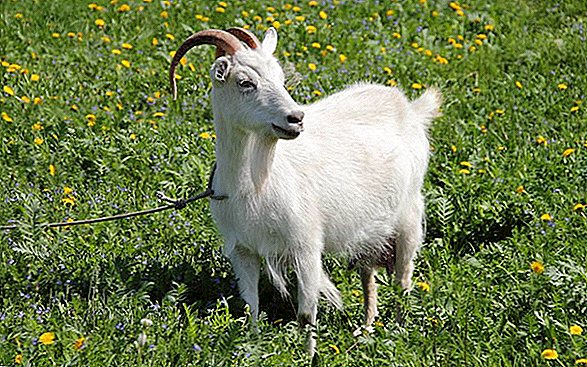
Mastitis is a common and very problematic disease in livestock. It brings a lot of losses to the farm. It is not easy to treat it, moreover, there is not always a guarantee that the ailment will completely retreat (transition to the chronic form). That is why it is better to carry out preventive measures to prevent this insidious disease.






